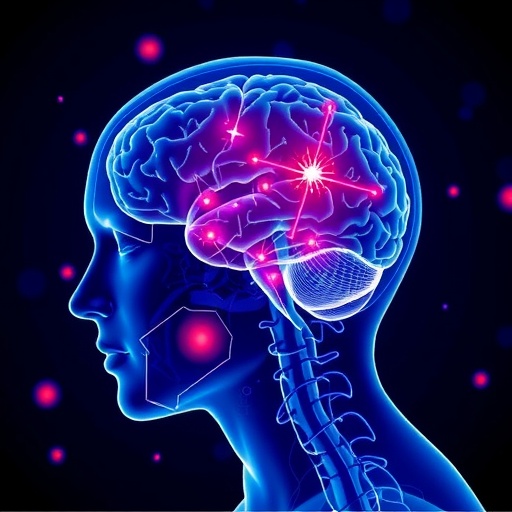Traumatic brain injury (TBI) remains a profound public health challenge, affecting millions of individuals across the United States annually. Despite advances in acute care and emergency medicine, substantial gaps persist in the long-term management and rehabilitation of these patients. Recent efforts spearheaded by a multidisciplinary working group have culminated in the most comprehensive national update to clinical practice guidelines for TBI—an overhaul that promises to reshape patient outcomes by improving diagnostic accuracy, follow-up care, and rehabilitation strategies throughout the continuum of TBI severity.
Dr. Monica Verduzco-Gutierrez, a leading physiatrist affiliated with UT Health San Antonio and chair of the Department of Physical Medicine and Rehabilitation at the Long School of Medicine, played an instrumental role in crafting these updated guidelines. Her participation in the National Academies of Sciences, Engineering, and Medicine working group was pivotal in reflecting the latest scientific evidence and clinical best practices to address the multifaceted challenges of TBI care. This update marks the first significant revision in over ten years and is grounded in a deep understanding of the complex neurobiological and psychosocial sequelae that emerge following brain trauma.
Traditional categorizations of TBI severity, especially the label of “mild” TBI, often fail to fully encapsulate the heterogeneity of symptoms and long-term disabilities patients endure. These limitations have historically hindered consistent follow-up care and rehabilitation, particularly for individuals who do not require hospitalization during the acute injury phase. The new guidelines underscore the necessity of structured follow-up protocols, emphasizing the importance of continual monitoring for cognitive decline, mood disturbances, and evolving functional impairments—symptoms that frequently manifest well beyond the initial injury timeline.
Published simultaneously in the Annals of Family Medicine and the Journal of Neurotrauma, the guideline update calls for standardized care pathways not only within tertiary care centers but also at the level of primary care. Recognizing that less than half of patients receive any form of follow-up care, the recommendations empower primary care providers with evidence-based tools to identify subtle yet clinically significant changes in TBI survivors. This paradigm shift prioritizes early intervention, facilitating timely referrals to rehabilitation specialists and mental health services when indicated, thereby mitigating the progression of chronic disability.
One of the most groundbreaking elements of the updated guideline is its explicit recognition of health-related social needs as critical determinants of successful TBI recovery. Dr. Verduzco-Gutierrez highlights how factors such as food insecurity, unstable housing, lack of transportation, and financial instability serve as formidable barriers within the healthcare system. Addressing these social determinants is essential to ensure patients can adhere to follow-up schedules, access prescribed medications, and engage fully with rehabilitative therapies. The guidelines advocate for systematic screening of social needs within clinical settings, recommending integrated care models that bridge medical treatment with social support resources.
This comprehensive approach to TBI management extends across the spectrum of injury severity and encompasses diverse patient populations including older adults, athletes, military service members, and survivors of intimate partner violence. By tailoring recommendations to these groups’ unique physiological, psychological, and environmental contexts, the guidelines promote individualized care plans. This nuanced strategy recognizes that the pathophysiology and recovery trajectories differ significantly based on age, injury mechanisms, and psychosocial stressors, requiring flexibility in clinical decision-making.
The updated guidelines also reflect an expanded understanding of the neurological complexity intrinsic to TBI. Advances in neuroimaging and biomarker research have elucidated the diffuse axonal injury, neuroinflammation, and neurochemical imbalances that characterize even mild forms of TBI. These insights inform diagnostic criteria that transcend blunt categorizations, encouraging clinicians to consider dynamic brain changes that evolve over months or years. The recommendations encourage ongoing research into biomarkers and neurophysiological assessments to refine prognostic accuracy and personalize therapeutic interventions further.
In strengthening outpatient care frameworks, the document stresses multidisciplinary collaboration involving physiatrists, neurologists, neuropsychologists, social workers, and rehabilitation therapists. This interprofessional model facilitates the coordination of medical management, cognitive rehabilitation, and psychosocial support. Early rehabilitation referrals can attenuate the debilitating consequences of TBI, such as persistent cognitive deficits, depression, and post-traumatic epilepsy, which cumulatively impair quality of life and social reintegration.
Integral to the guideline’s vision is the promotion of equitable care delivery. The substantial variability in access to rehabilitation services, particularly in rural and underserved communities, is noted as a critical obstacle that must be overcome. The guidelines advocate for telehealth innovations and community-based programs to close these gaps, ensuring all individuals affected by TBI are afforded consistent and effective care pathways.
Moreover, emphasis is placed on empowering patients and caregivers through education about symptom awareness, coping strategies, and when to seek further medical evaluation. Enhancing health literacy fosters proactive management of late-emerging symptoms and reduces the risk of secondary complications. This patient-centered approach aligns with contemporary models of chronic disease management and rehabilitation medicine.
The implications of these revised clinical practice guidelines reach far beyond clinical settings; they signal a societal commitment to addressing the long-term burdens of brain injury. Improved standards for TBI care have the potential to alleviate healthcare costs associated with repeated hospitalizations, institutionalization, and disability payments by promoting functional recovery and social participation. As the guidelines become widely implemented, they represent a transformative shift toward a comprehensive, sustainable, and compassionate care framework for millions living with the enduring consequences of traumatic brain injury.
Subject of Research: Traumatic Brain Injury Clinical Care and Rehabilitation Guidelines
Article Title: Action Collaborative on Traumatic Brain Injury Care: Adapted Clinical Practice Guideline
News Publication Date: November 7, 2025
Web References: http://dx.doi.org/10.1177/08977151251378894
References: National Academies of Sciences, Engineering, and Medicine; Annals of Family Medicine; Journal of Neurotrauma
Keywords: Brain injuries, Traumatic injury, Traumatic brain injury, Rehabilitation, Neurotrauma, Clinical practice guidelines




